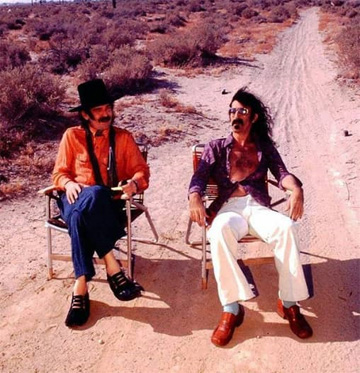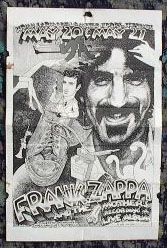Remote recording by THE RECORD PLANT, L.A.; Overdubs and mixing at THE RECORD PLANT, L.A.
200 Years Old, Cucamonga and Muffin Man intros were recorded in January and February, 1974 at THE RECORD PLANT, L.A.
Engineered by KERRY McNAB, MIKE BRAUNSTEIN, KELLY KOTERA, MIKE STONE, DAVEY MOIRE, and FRANK HUBACH
I moved [from New York] to California. I was living in Laguna Beach. Got call from my friend, she'd been a studio manager at Record Plant New York, and said, "I'm in L.A. working for Record Plant West. Want a job?" I was like, "Doing what?" "Well, you could start off driving the remote truck. You know how to do that."
Then we did Frank Zappa at the Armadillo in Austin, Texas with Captain Beefheart. Two nights. Came back from that and Frank requested me as the second engineer on (a recording studio) session. I thought I was just going to assist the first engineer and Frank would produce.
Frank walks in and I've got the number one reel set up on the tape machine and everything, and he sits down and says, "OK let's get started." And I said, "Well where's (engineer/producer) Mike Stone?" "Mike Stone doesn't work for me anymore." And I said, "Who's going to mix these tapes?" And he said, "Well I guess me and you." So, from then on, I was the first engineer and ended up doing my own albums, like (former Deep Purple guitarist) Tommy Bolin's solo project, a bunch of Frank's records I was co-engineer on. It was a pretty cool thing, actually.
[...]
With Zappa, I became a first engineer [...]. Now I was thought of as a first engineer and we no longer thought of as only a tape operator or second engineer. With Frank, I was splitting the recording duties with Michael Braunstein—the two of us were working on his records together and even the movie soundtrack Baby Snakes. I worked on records like Sheik Yerbouti, Zoot Allures and Studio Tan. I ended up singing the lead vocals on "Wind Up Workin' in a Gas Station" off Zoot Allures. Background vocals on (the Zappa single) "Disco Boy." "Let Me Take You to the Beach" on Studio Tan. I sang background vocals on "Baby Snakes," all the high falsetto. Sang on a bunch of his stuff.
[...]
Frank had a live show with a 40-piece all-electric orchestra and he was playing at Royce Hall at UCLA, which was like a big symphonic theater on UCLA's campus. He said, "Come out and mix live sound for that." And I said, "Frank I don't mix live sound. Hell, I'm barely a studio engineer."
I'd never done live sound in my life. He said, "Well everything that you're doing here (in the studio) just do it there." And I was like, "What?" This is a 40-piece all-electric orchestra, so even the acoustic instruments are mic-ed and playing through amps. So even the cello and the bassoon and oboes and violas are all playing through amplifiers. I ended up mixing and Frank, he's conducting the orchestra, and about the third song he puts the baton down, climbs off the front of the stage, walks up the center aisle to where I am. And he's listening and he's like, "Yeah, a little more strings. Yeah, yeah, sounds fine." Walks back down the aisle. Climbs back on the aisle, flips the page to the score, takes up the baton and continues. That was like the first live show I ever mixed. And from then on, I did his albums and his tours.

